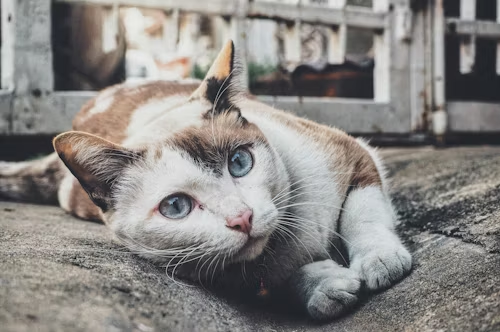Cats are wonderful companions, but like all pets, they are susceptible to various health issues. Understanding these common problems and knowing how to prevent them is crucial for maintaining your cat’s health and well-being. This comprehensive guide outlines the top 10 health issues in cats, along with practical prevention and management tips to keep your feline friend in tip-top shape.
1. Feline Lower Urinary Tract Disease (FLUTD)
1.1. What is FLUTD?
Feline Lower Urinary Tract Disease (FLUTD) encompasses various conditions affecting the bladder and urethra in cats. Symptoms include frequent urination, straining to urinate, blood in the urine, and inappropriate urination.
1.2. Causes
- Urinary Crystals or Stones: Mineral deposits can form in the bladder, causing irritation and blockage.
- Infections: Bacterial infections can lead to inflammation and discomfort.
- Stress: Environmental changes or stress can contribute to FLUTD.
1.3. Prevention
- Hydration: Ensure your cat has constant access to fresh water and consider wet food to increase water intake.
- Diet: Feed a balanced diet formulated to prevent urinary issues. Consult your vet for recommendations.
- Stress Reduction: Provide a stable environment and consider using calming products if your cat is prone to stress.
2. Dental Disease
2.1. What is Dental Disease?
Dental disease, including gingivitis and periodontal disease, is common in cats and can lead to tooth loss and oral pain. Symptoms include bad breath, difficulty eating, and inflamed gums.
2.2. Causes
- Plaque and Tartar: Build-up of plaque and tartar leads to gum inflammation and infection.
- Diet: Hard food may help reduce plaque, but it is not a substitute for regular dental care.
2.3. Prevention
- Regular Brushing: Brush your cat’s teeth with a cat-specific toothpaste and toothbrush.
- Dental Check-Ups: Schedule regular veterinary dental check-ups and cleanings.
- Dental Treats: Use dental treats designed to reduce plaque and tartar build-up.
3. Obesity
3.1. What is Obesity?
Obesity is a growing concern in cats and can lead to numerous health issues, including diabetes, joint problems, and heart disease.
3.2. Causes
- Overfeeding: Excessive caloric intake can lead to weight gain.
- Lack of Exercise: Indoor cats may not get enough physical activity.
- Metabolic Disorders: Some cats may have a genetic predisposition to obesity.
3.3. Prevention
- Portion Control: Measure your cat’s food and follow feeding guidelines provided by your vet.
- Exercise: Encourage play with interactive toys to keep your cat active.
- Regular Weigh-Ins: Monitor your cat’s weight regularly and adjust their diet and exercise as needed.
4. Kidney Disease
4.1. What is Kidney Disease?
Kidney disease is a common condition in older cats, where the kidneys lose their ability to filter waste effectively. Symptoms include increased thirst, frequent urination, weight loss, and vomiting.
4.2. Causes
- Age: Kidney function naturally declines with age.
- Genetics: Some breeds are more prone to kidney disease.
- Chronic Conditions: Conditions like diabetes or high blood pressure can affect kidney health.
4.3. Prevention
- Hydration: Encourage water intake to support kidney function.
- Balanced Diet: Feed a diet specifically formulated for kidney health if recommended by your vet.
- Regular Check-Ups: Schedule annual vet visits to monitor kidney function, especially for older cats.
5. Feline Diabetes
5.1. What is Feline Diabetes?
Diabetes in cats occurs when the body cannot properly regulate blood sugar levels. Symptoms include excessive thirst, frequent urination, weight loss, and increased appetite.
5.2. Causes
- Obesity: Overweight cats are at a higher risk of developing diabetes.
- Genetics: Certain breeds and older cats are more prone to diabetes.
- Diet: Poor diet can contribute to the development of diabetes.
5.3. Prevention
- Healthy Weight: Maintain your cat’s weight through a balanced diet and regular exercise.
- Monitor Diet: Feed a high-protein, low-carbohydrate diet if recommended by your vet.
- Regular Vet Visits: Monitor your cat’s blood sugar levels and overall health with regular vet check-ups.
6. Ear Infections
6.1. What are Ear Infections?
Ear infections in cats are commonly caused by bacteria, yeast, or parasites. Symptoms include scratching at the ears, head shaking, and a bad odor from the ears.
6.2. Causes
- Ear Mites: Tiny parasites that can cause irritation and infections.
- Bacterial or Yeast Infections: Can result from moisture or debris in the ears.
- Allergies: Allergic reactions can lead to ear inflammation and infections.
6.3. Prevention
- Regular Cleaning: Clean your cat’s ears regularly with a vet-recommended ear cleaner.
- Check for Parasites: Regularly check for signs of ear mites and other parasites.
- Avoid Moisture: Keep your cat’s ears dry and avoid getting water in their ears during baths.
7. Feline Leukemia Virus (FeLV)
7.1. What is FeLV?
Feline Leukemia Virus (FeLV) is a viral infection that affects the immune system and can lead to various health problems, including anemia, cancer, and immune suppression.
7.2. Causes
- Direct Contact: Spread through close contact with infected cats, including grooming and sharing food or water bowls.
- Mother-to-Kitten: Can be transmitted from an infected mother cat to her kittens.
7.3. Prevention
- Vaccination: Vaccinate your cat against FeLV, especially if they are at risk of exposure.
- Testing: Test new cats for FeLV before introducing them to your home.
- Isolation: Keep infected cats separate from other cats to prevent the spread of the virus.
8. Fleas and Ticks
8.1. What are Fleas and Ticks?
Fleas and ticks are external parasites that can cause itching, skin infections, and transmit diseases. Symptoms include scratching, biting at the skin, and visible parasites.
8.2. Causes
- Outdoor Exposure: Cats that go outside are at higher risk of picking up fleas and ticks.
- Contact with Other Animals: Fleas and ticks can be transmitted from other pets or wildlife.
8.3. Prevention
- Preventive Medications: Use veterinarian-recommended flea and tick preventatives.
- Regular Grooming: Regularly check your cat for fleas and ticks and groom them to remove any parasites.
- Clean Environment: Keep your home and your cat’s bedding clean and free of fleas and ticks.
9. Vomiting and Diarrhea
9.1. What are Vomiting and Diarrhea?
Vomiting and diarrhea are common symptoms in cats and can result from a variety of issues, including dietary indiscretion, infections, or underlying health conditions.
9.2. Causes
- Dietary Changes: Sudden changes in diet or eating inappropriate items.
- Infections: Viral or bacterial infections can lead to gastrointestinal upset.
- Parasites: Intestinal parasites can cause vomiting and diarrhea.
9.3. Prevention
- Dietary Consistency: Avoid sudden changes in your cat’s diet and introduce new foods gradually.
- Safe Environment: Ensure your cat does not have access to harmful substances or unsafe foods.
- Regular Deworming: Keep up with regular deworming as recommended by your vet.
10. Hairballs
10.1. What are Hairballs?
Hairballs are clumps of ingested hair that can form in the stomach and lead to vomiting or coughing. They are common in cats, especially those with long fur.
10.2. Causes
- Grooming: Cats that groom excessively may ingest more hair.
- Shedding: Increased shedding can contribute to hairball formation.
10.3. Prevention
- Regular Grooming: Brush your cat regularly to reduce shedding and hair ingestion.
- Special Foods: Consider hairball control diets or treats designed to help reduce hairballs.
- Hydration: Ensure your cat has access to fresh water to aid digestion and prevent hairball formation.
Conclusion
Keeping your cat healthy involves understanding and preventing common health issues that can affect them. Regular veterinary check-ups, a balanced diet, proper grooming, and preventive care are essential components of maintaining your feline friend’s well-being. By staying informed about these common health problems and implementing preventive measures, you can help ensure that your cat enjoys a long, happy, and healthy life.











Leave a Reply